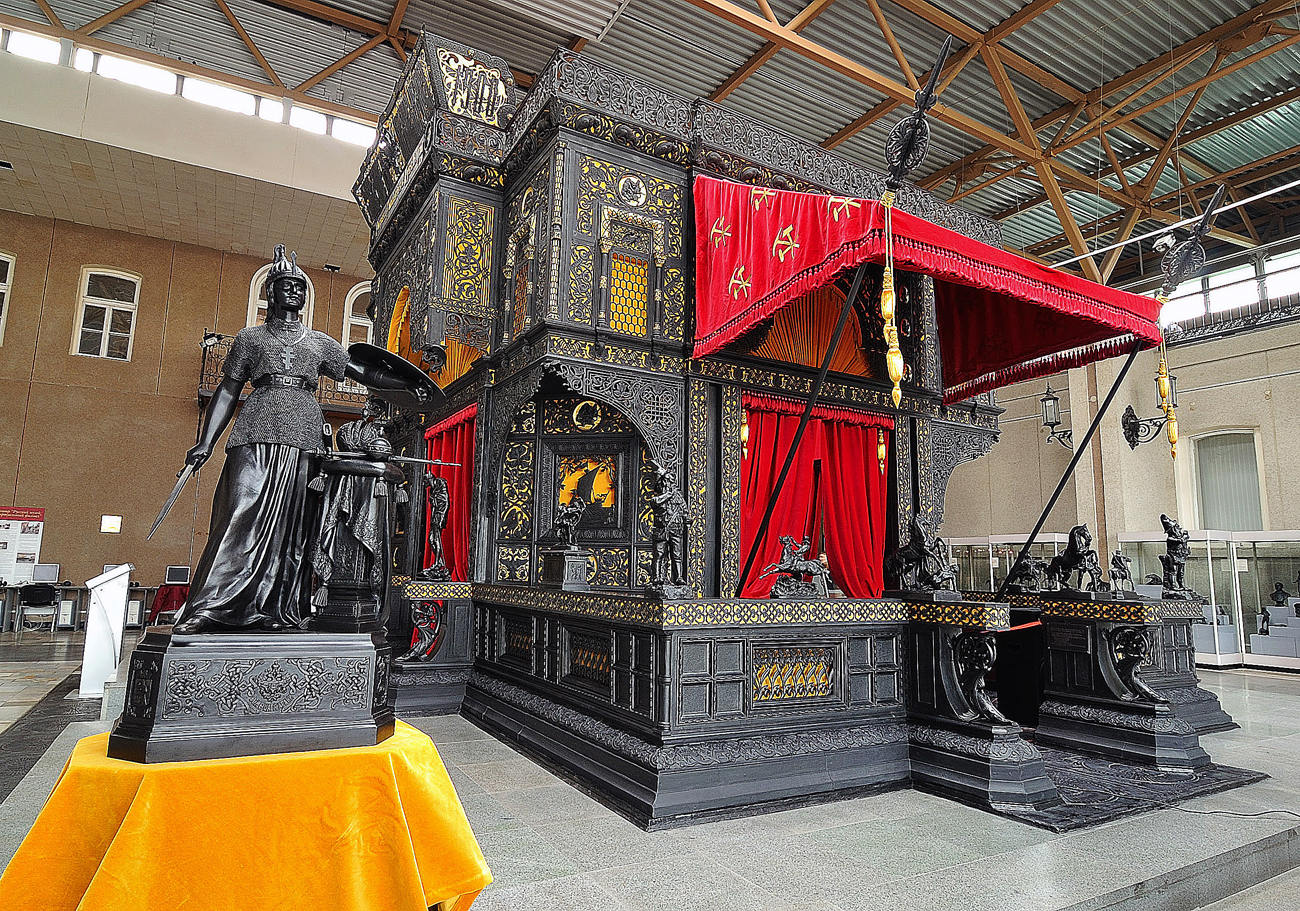 The Kaslinsky Cast Iron pavilion created one hundred and ten years ago was opened after the renovation at the Fine Arts Museum. Source: Anton Butsenko / TASS
The Kaslinsky Cast Iron pavilion created one hundred and ten years ago was opened after the renovation at the Fine Arts Museum. Source: Anton Butsenko / TASS
In 1747, industrialist Yakov Korobkov bought land in the settlement of Kasli in the Chelyabinsk Region (about 1,100 miles east of Moscow), where he built several factories. Initially, the bulk of the orders were for the military, but the Ural plant also produced fine cookware, such as pots, cauldrons and other utensils.
The famous artistic castings appeared later, in the 1800s, first as copies and then as original works.
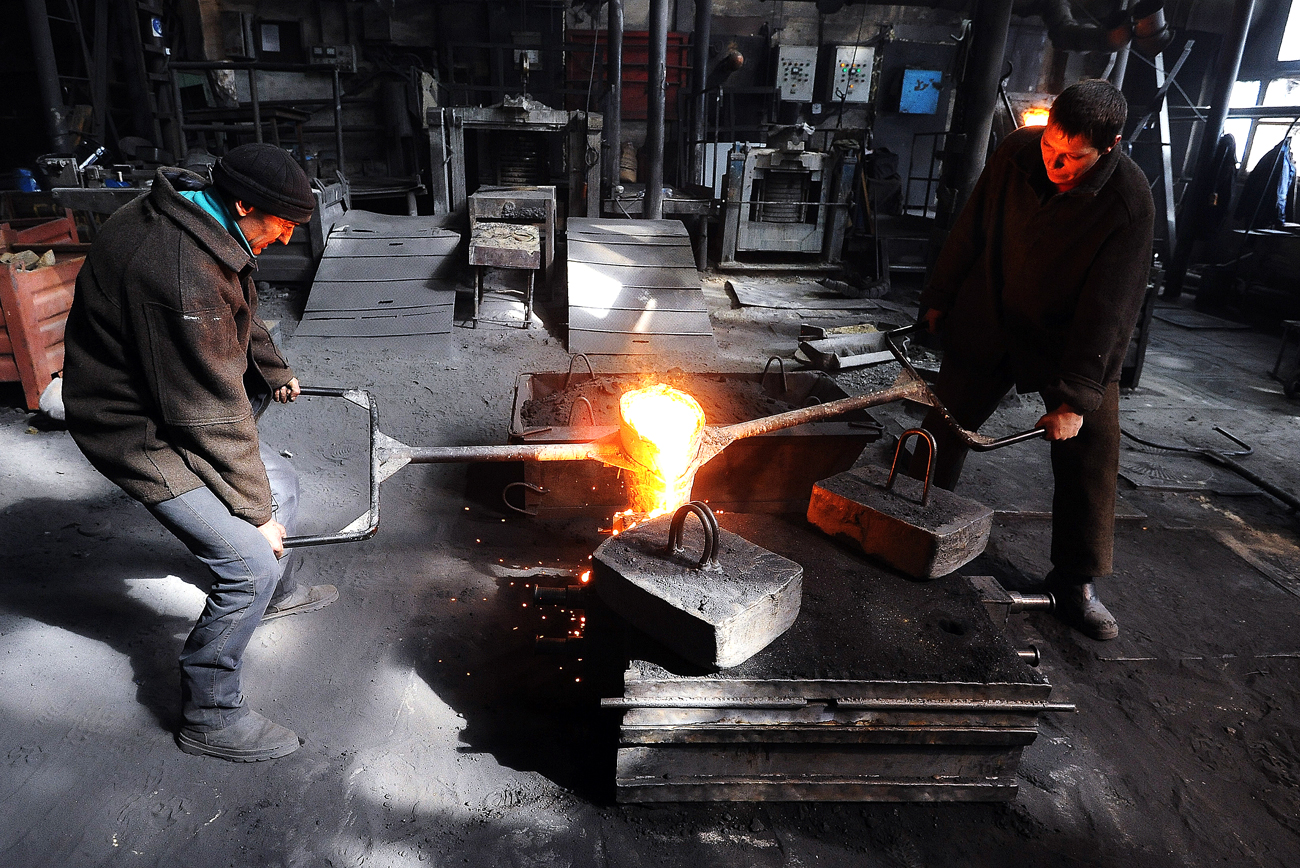
Factory manager Grigory Zotov brought the first model sculptures for art castings from Berlin in 1820. It was from these models that the Russian masters made their copies. In 1855, Mikhail Kanayev, a graduate of the Imperial Academy of Arts, began to work in Kasli as the factory’s first professional sculptor. The famous Kasli indoor sculptures were based on his designs, and later, on designs by other famous sculptors. Sculptures with their own distinctive style and subject matter appeared, and they later became quite well-known: Wood-sledge, Old Woman at a Spinning Wheel and others.
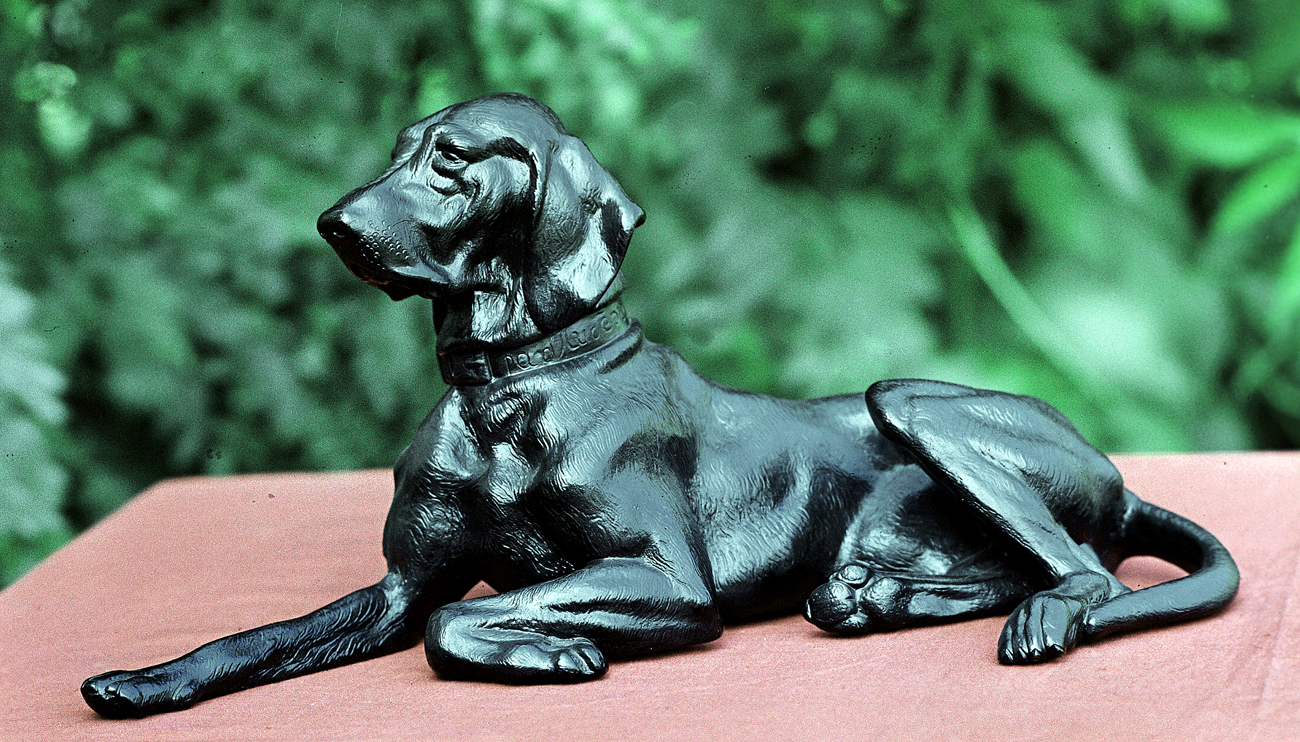 Cast iron sculpture "A Pointer dog" by N. Liberikh. Collection of the Sverdlovsk Arts gallery. Source: RIA Novosti
Cast iron sculpture "A Pointer dog" by N. Liberikh. Collection of the Sverdlovsk Arts gallery. Source: RIA Novosti
Subsequently, Zotov's work was taken over by Grigory Druzhinin. A passionate collector, he was the factory's manager and de facto art director for 30 years. Druzhinin added to the collection of model sculptures used by Kasli masters for their own work.
The models included about 20 sculptures by Peter Klodt von Jurgensburg, the sculptor of one of St. Petersburg's most recognizable landmarks, The Horse Tamers on Anichkov Bridge. Today, the plant's model collection includes 800 artistic castings, as well as about 400 architectural and other castings.
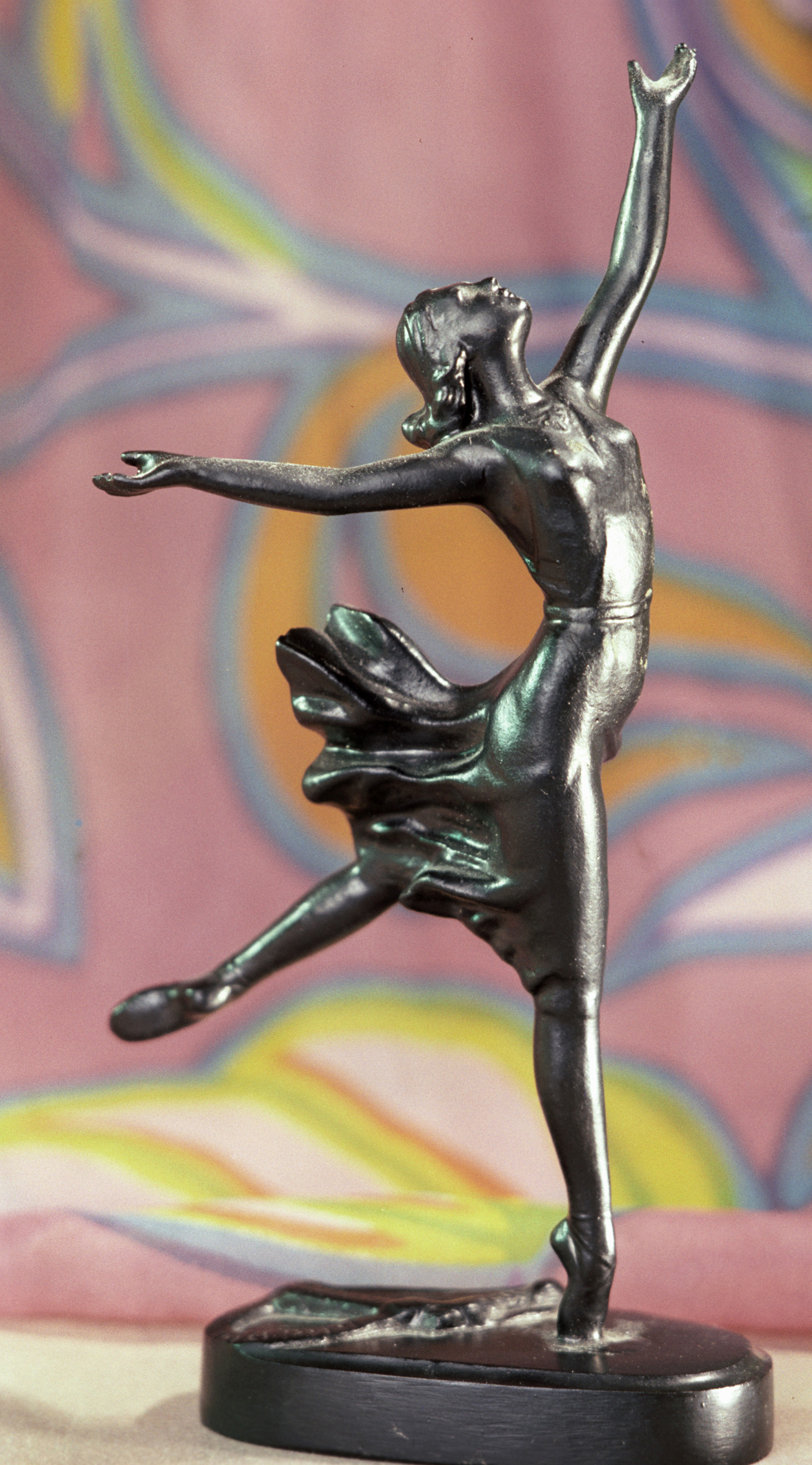 Yelena Janson-Manizer. "Ballet Prima Galina Ulanova". 1940s. Source: Knyajunskiy L. / RIA Novosti
Yelena Janson-Manizer. "Ballet Prima Galina Ulanova". 1940s. Source: Knyajunskiy L. / RIA Novosti
Over the years, the basic technical aspects of casting remained unchanged. It was believed, for example, that the
The finished sculpture is preceded by the creation of a sketch, model, casting, stamping and coating with a special compound of carbon black and varnish, which gives the sculptures a special black velvety tone.
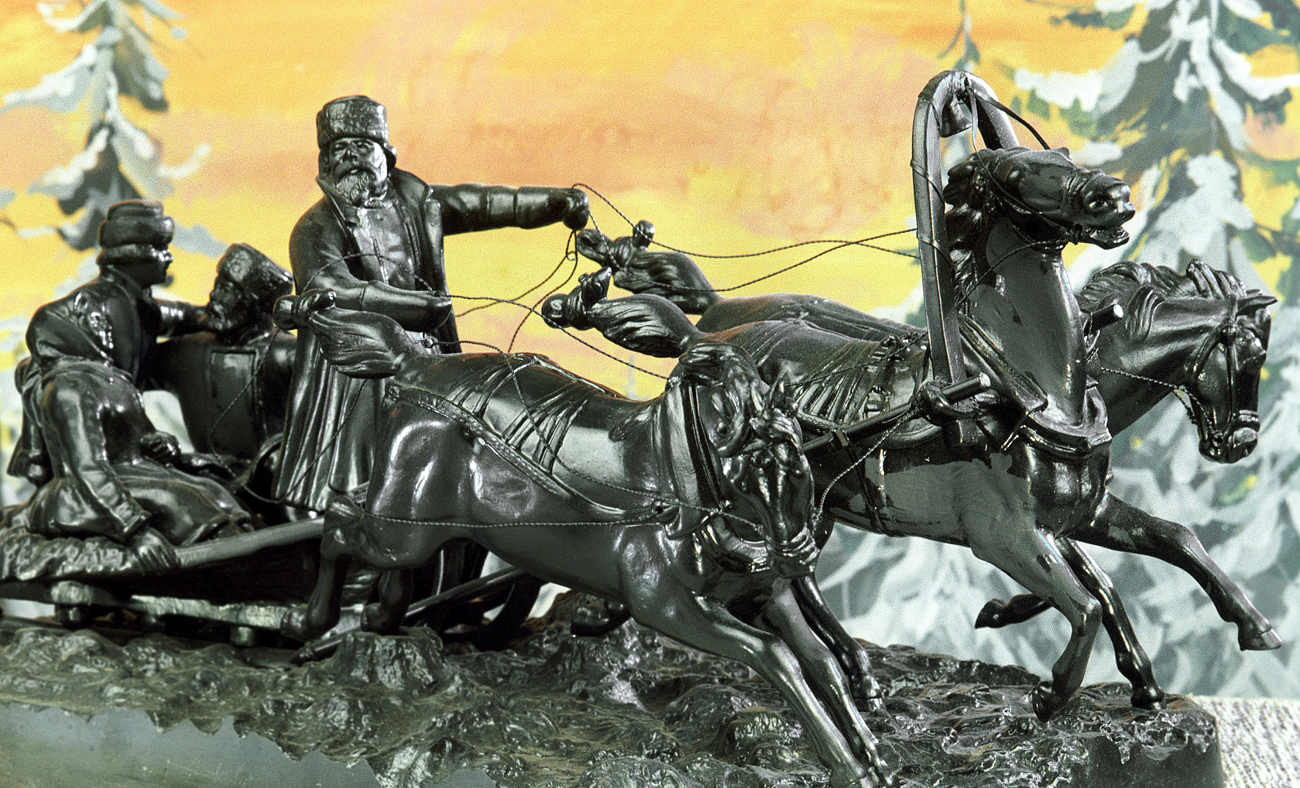 Figurine "
Figurine "
Kasli cast-iron sculptures were
The egalitarianism of the cast iron is striking, as it can be made into utilitarian objects or fine works of art. When the Russian imperial court placed orders with Italian architect Carlo Rossi, he entrusted the casting of the architectural details to
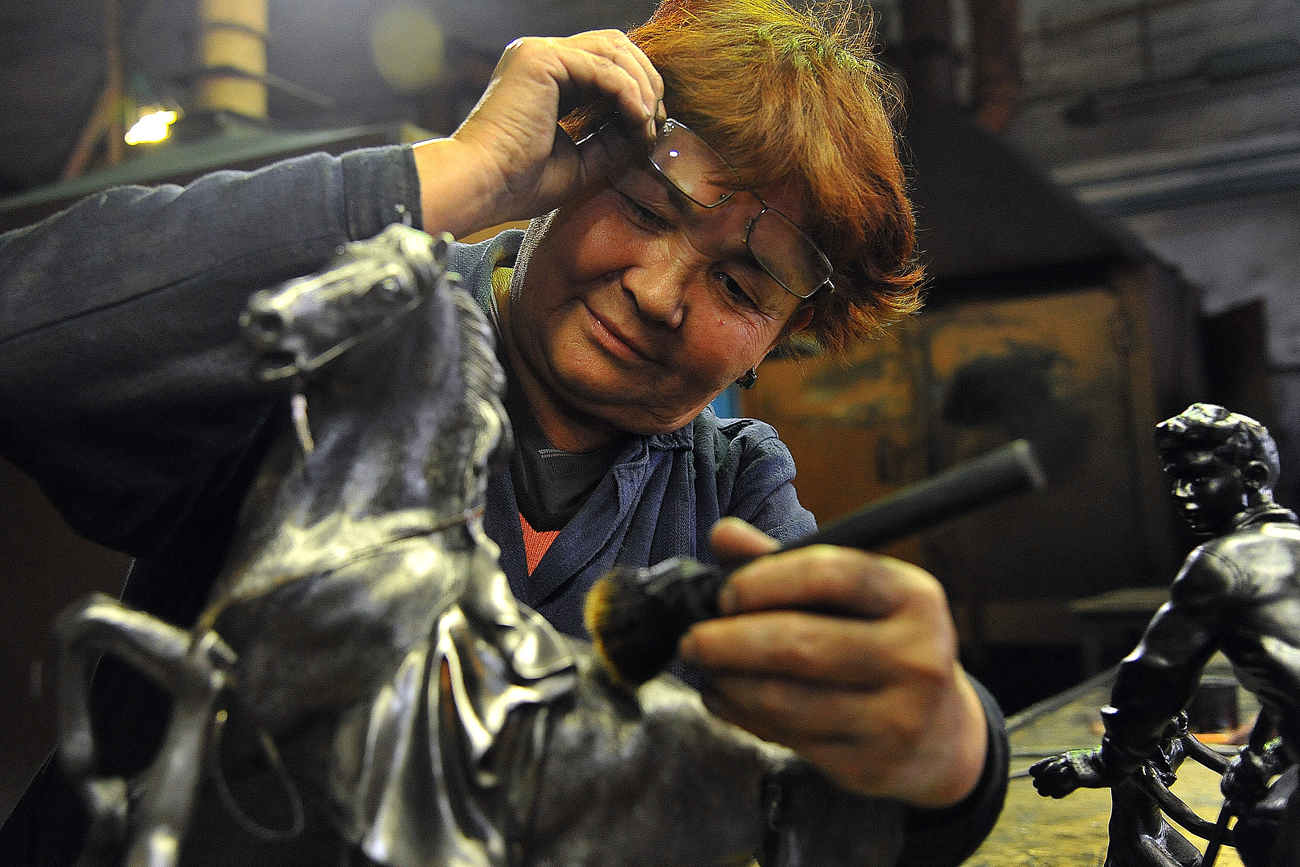 A worker of the Kasli Plant for Architectural and Art Castings covers the surface of a sculpture with a paint. Source: Alexander Kondratuk / RIA Novosti
A worker of the Kasli Plant for Architectural and Art Castings covers the surface of a sculpture with a paint. Source: Alexander Kondratuk / RIA Novosti
In 1900, Kasli participated in the World Exhibition in Paris. When designing the Kasli pavilion, architect Yevgeny Baumgarten used elements of Russian modernist style as well as Byzantine and Scandinavian motifs. This work glorified Kasli not only in Russia but also abroad.
There was also an amusing episode during the exhibition. A sculpture called Russia by Nikolai Laveretsky stood in front of the pavilion – an allegorical image of a woman in armor and with a sword in hand, which personified Russia. Many inquired about buying it, but after long
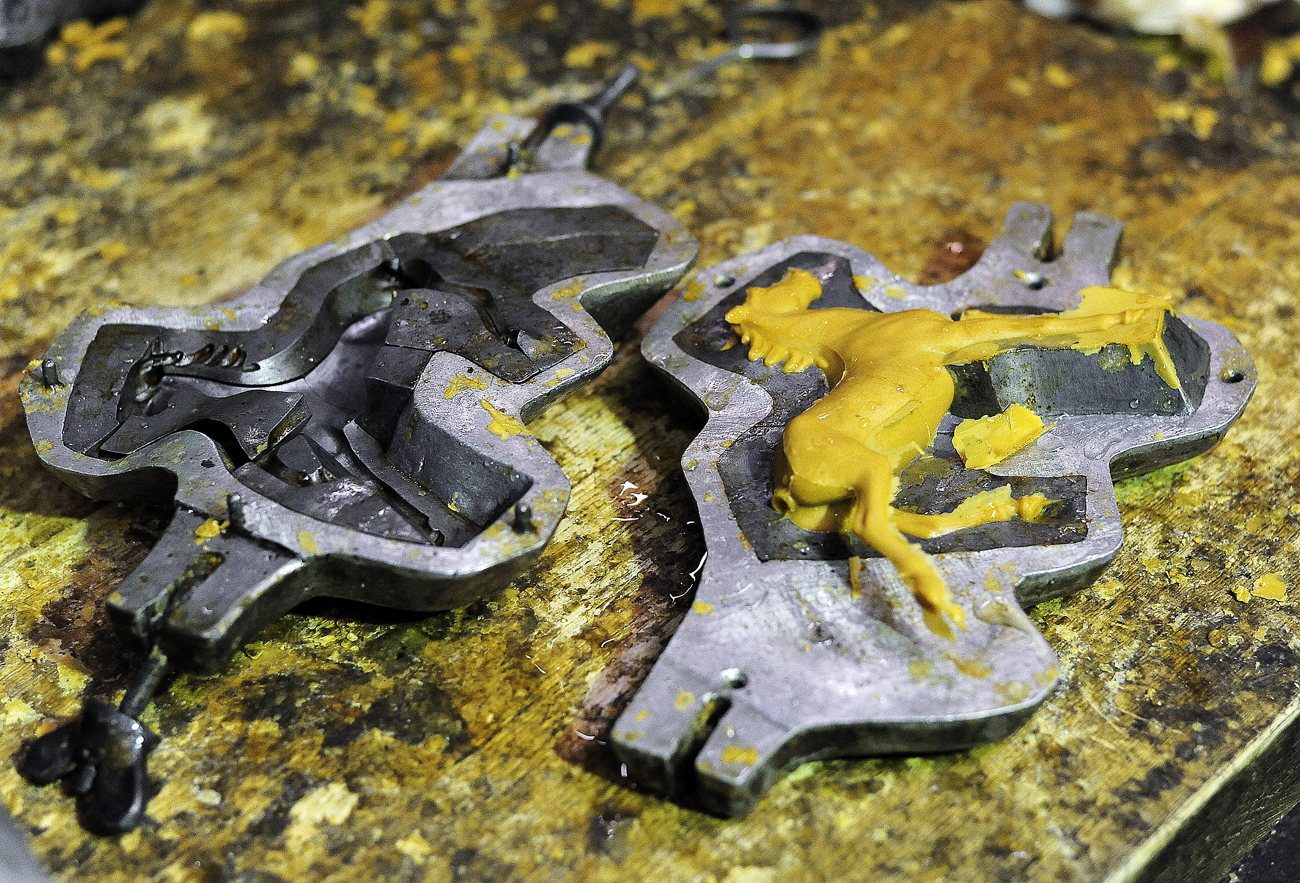 Wax
Wax
As happens in many other crafts, Kasli has had masters who learned their skills from their fathers, and this tradition continued into the 20th century. Semyon Gilyov was in charge of the reconstruction of the pavilion in Paris beginning in 1957. His son Alexander worked at the factory for more than 30 years, including 10 years as the head sculptor. Thanks to him,
Even now, when the raw materials are brought from the Chelyabinsk Metallurgical Plant, the art-casting workshop still maintains its traditions. Last year, the Kasli masters even conducted an experiment, producing a small number of brooches,
All rights reserved by Rossiyskaya Gazeta.
Subscribe
to our newsletter!
Get the week's best stories straight to your inbox